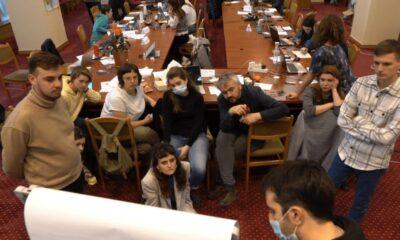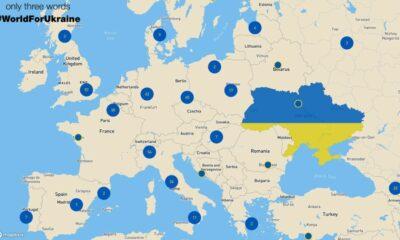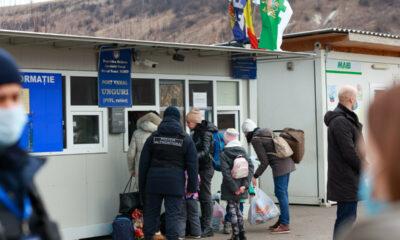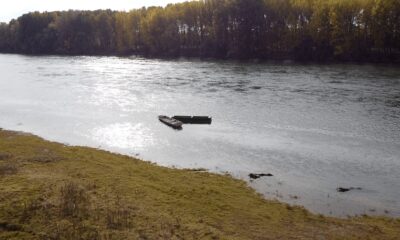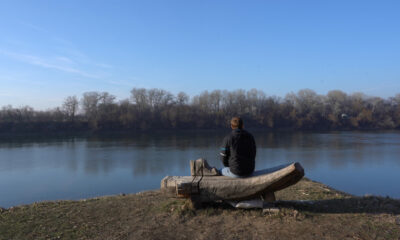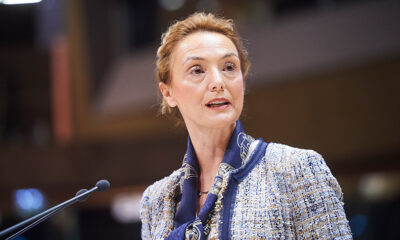Economy
Analysis: Ukrainian gas distribution networks eyed for swaps with Gazprom
Reading Time: 3 minutesUkrainian gas distribution networks eyed for swaps with Gazprom
Author: Vladimir Socor
Since the law initiated by opposition leader Yulia Tymoshenko and adopted by parliament on February 6 has banned any form of alienating gas transit pipelines and other Naftohaz Ukraine-owned assets (see EDM, February 7), Russia’s Gazprom and officials in Kyiv seem to be adjusting their approach. They now suggest transferring stakes in Ukrainian oblast-level and local distribution companies to Gazprom, in return for Ukrainian “access” to gas extraction projects in Russia. Such transfers could, however, eviscerate Ukraine’s gas transport system from within, aggravating Naftohaz’ already bleak financial situation and potentially setting the stage for a transfer of the transit system itself later on.
On February 19, Ukrainian Fuel and Energy Minister Yuriy Boyko indicated that the government might transfer parts of Ukraine’s gas distribution networks to Gazprom. Speaking in the wake of talks with Gazprom president Alexei Miller, Boyko said, “Russia is not interested in anything other than distribution networks in Ukraine.” Gazprom has proposed specific options to exchange Russian extraction assets for Ukrainian infrastructure assets. Ukraine’s State Property Fund is currently preparing sales of minority stakes in distribution companies in certain Ukrainian oblasts (Interfax-Ukraine, February 19).
Swapping Ukrainian infrastructure for “access” to Russian oil and gas deposits does not seem to be a viable proposition. Ukraine is hardly able to provide the high inputs of technology and investment capital required by extractive projects in Russia. More likely, such “access” would become a cover for non-transparent transfers of Ukrainian infrastructure portions to Gazprom or to companies and individuals fronting for Gazprom.
These proposals are being accompanied by distracting suggestions emanating also from Boyko’s ministry as well as from Prime Minister Viktor Yanukovych. These profess intentions to seek production-sharing agreements for gas and oil — including some offshore projects — in Turkmenistan, Uzbekistan, Egypt, and Libya (Zerkalo nedeli, February 17; ICTV Television [Kyiv], February 19). Such intentions are also clearly beyond Ukraine’s means and might form a smokescreen for the real game ongoing with Moscow. More realistically perhaps, Yanukovych proposes that Naftohaz participate in reconstructing Uzbek gas pipelines “together with the other interested parties” — apparently referring to Russia, next to which Naftohaz could only play a relatively minor role in Uzbekistan.
In a variation on this theme, Boyko cites Ukrainian investment projects in Turkmenistan (building a bridge on the Amu Darya river, several gas compressor stations, an irrigation water supply ring) as entitling Ukraine to certain volumes of Turkmen gas (UNIAN, February 19). However, most of these low-tech investments date back to the late 1990s and have strained Ukraine-Turkmen relations because of long delays and cost overruns. This situation was a factor in Ashgabat’s December 2005 decision to renounce direct sales of gas to Ukraine, selling the gas instead to Gazprom for indirect delivery to Ukraine via RosUkrEnergo.
Members of President Viktor Yushchenko’s team are airing serious concerns over proposals to sell infrastructure stakes to Russian interests. In a February 19 teleconference with heads of oblast administrations, First Deputy Head of the Presidential Secretariat Arseniy Yatseniuk criticized such “regrettable schemes” for thwarting the creation of a competitive environment in Ukraine and placing Russian interests in control. Alluding to similar processes ongoing in European Union countries, Yatseniuk decried the absence of a common energy policy for the EU or the former Soviet countries (Interfax-Ukraine, February 19).
For his part, National Security and Defense Council Vitaliy Hayduk refutes Russian President Vladimir Putin’s claim that Yushchenko presented a “revolutionary proposal” to Putin about “unifying” Ukraine’s and Russia’s gas transit systems during their summit in December (Interfax-Ukraine, February 16). That bold assertion by Putin in his February 1 press conference backfired, prompting Tymoshenko’s legislative initiative and the Rada’s February 6 vote to ban alienation of Naftohaz pipelines and other assets. However, that law does not protect Ukrainian local and oblast-level gas distribution networks.
Meanwhile, both the presidency and the government support the creation of a Russian-Ukrainian consortium to build the long-planned Bohorodchany-Uzhhorod pipeline, which could add as much as 19 billion cubic meters to Ukraine’s annual transit capacity for Russian and/or Central Asian gas to Europe. While consistent with Ukraine’s interest in a narrow and short-sighted sense, this line would actually increase Gazprom’s market share in Ukraine and Europe and also expand the “single channel” for Central Asian gas through Russia and Ukraine to Europe. A Bohorodchany-Uzhhorod pipeline could preemptively absorb Central Asian gas volumes that are needed for the projected trans-Caspian and Nabucco projects.
With Tymoshenko in the forefront, the case is gaining political ground for eliminating RosUkrEnergo — or any intermediary fronting for Gazprom — from the Russia-Ukraine gas trade. By the same token, Tymoshenko is calling for direct purchases of gas from Central Asia, with Russia as transit country but not as commercial intermediary (Ukrainian News Agency, February 16).
Last month, Yushchenko and Yanukovych separately signaled interest in having Ukraine connected to the projected Nabucco pipeline for Caspian gas. However, Yushchenko’s and Yanukovych’s signals on energy policy are mixed and confusing (see EDM, December 14, 2006). Given the magnitude of Ukraine’s gas market, some clear signals of Ukrainian interest in the projected trans-Caspian pipelines could substantially enhance those projects’ commercial attractiveness, demonstrating that market demand is present and massive. // The Eurasia Daily Monitor
Economy
Moldova will receive a disbursement of 36 million euros as part of the the Economic Recovery Plan
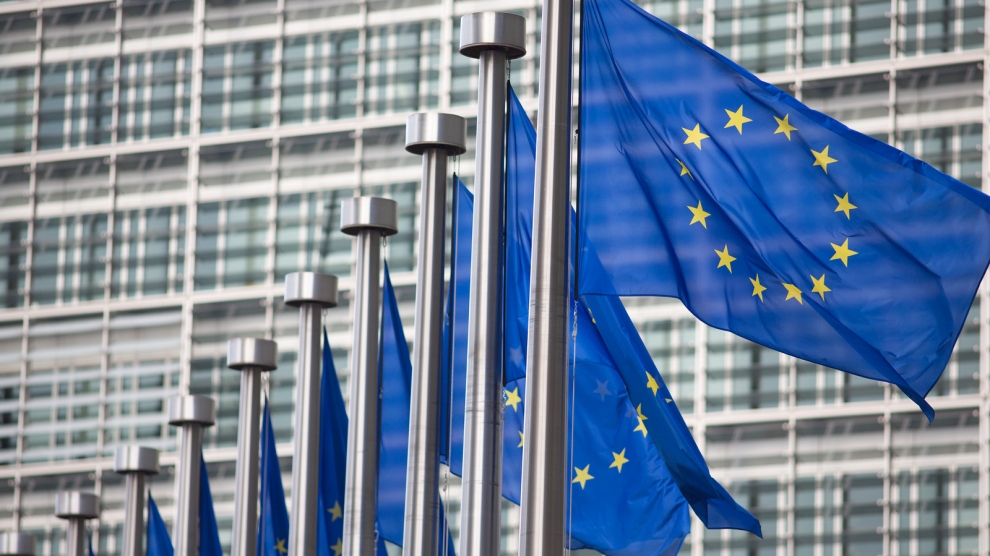
This week, the European Commission approved the disbursement of 36 million euros in grant money for the Republic of Moldova. The announcement was made by Deputy Director-General for Neighbourhood Policy and Enlargement Negotiations at the European Commission, Katarina Mathernova, who paid an official visit to the Republic of Moldova between September 13-15, together with Managing Director for Russia, Eastern Partnership, Central Asia, Regional cooperation and OSCE, at the European External Action Service, Michael Siebert.
The EU officials had meetings with President Maia Sandu, Minister of Foreign Affairs and European Integration, Nicu Popescu, Speaker of Parliament, Igor Grosu, Prime Minister of the country, Natalia Gavrilita, as well as key representatives of Government, international financial institutions and the civil society, according to a press release issued by the Delegation of the European Union to the Republic of Moldova.
Beside such topics as the EU-Moldova relations and prospects, the priorities of the reform agenda of the new Moldovan Government, preparations for the Eastern Partnership Summit at the end of the year and the Transnistrian conflict settlement, the officials also discussed the EU assistance in support of reforms and the Economic Recovery Plan for Moldova, which was announced in June with a total EU support of 600 million euros over the next 3 years.
“The first measures under the Economic Recovery Plan will shortly materialize, with the expected disbursement of 36 million euros in grant money under budget support programmes to support the authorities’ efforts to fight against the consequences of the pandemic. Moldova can count on EU’s assistance on its path to reforms and to recovery, bringing tangible results to citizens,” Katarina Mathernova stated.
The plan is based on assistance provided by the European Union through various bilateral and regional instruments, aiming to mobilize the funds in the form of grants, loans, guarantees and macro-financial assistance.
“The Economic Recovery Plan for the Republic of Moldova involves much more, not just this financial support provided immediately. It must help digital transformation, strengthen infrastructure, energy efficiency, education and support small and medium-sized enterprises,” the EU official also said.
As Prime Minister Natalia Gavrilita informed, “The Economic Recovery Plan and the 5 flagship initiatives for Moldova in the Eastern Partnership will directly contribute to the reform and consolidation of institutions, stimulate long-term socio-economic development, bring direct benefits to citizens, and unleash new economic opportunities through promoting the green agenda and digitization. Small and medium-sized enterprises (SMEs) have been hit hard by the crisis. Promoting and diversifying access to finance and reducing collateral requirements will be essential in supporting economic operators. We are grateful to the EU partners who will launch two programs to support 50 000 independent Moldovan SMEs to adapt to the new conditions.”
President of the Republic of Moldova, Maia Sandu, welcomed the decision of the European Union to disburse about 745 million lei in grant money, as the official page of the President’s Office announced. “EU support comes after a long period of freezing of European assistance, caused by former governments. We managed to relaunch the political dialogue with the European Union and resume financial assistance. The Republic of Moldova is gradually regaining the trust of its strategic partners. This European support is also a signal of encouragement for the new Government team in its commitment to clean up the institutions, fight corruption and launch development programs in the country,” said Maia Sandu.
Photo: unknown
Economy
Romania and Moldova signed a partnership memorandum pledging to cooperate in promoting their wines
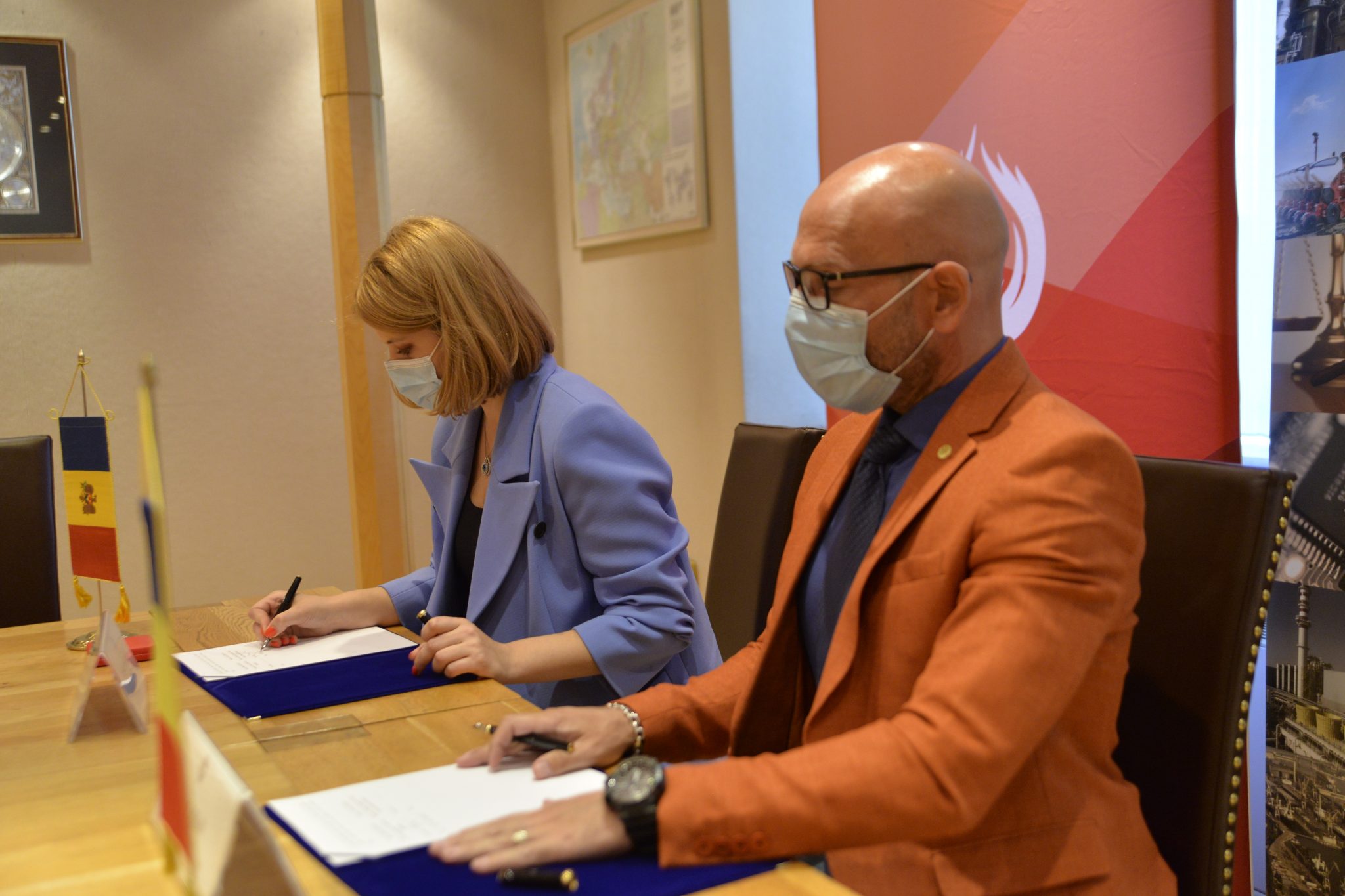
The Chamber of Commerce and Industry of Romania (CCIR) and the National Office for Vine and Wine (NOVW) of the Republic of Moldova signed, last week, a memorandum of cooperation on organizing joint promotional activities in the markets of common interest, as the CCIR announced.
China, Japan or the USA are just some of the markets targeted by the Romanian and Moldovan institutions. The memorandum also involves advertising activities for wines from common indigenous varieties, promoting the oeno-tourist region, developing a tourist route in the two states, exchange of experience, study visits, and mutual support in identifying new export opportunities. “We are very confident that this collaboration between our organizations will lead to sustainable economic growth and a higher degree of well-being among Moldovans and Romanians,” claimed Deputy Secretary-General of CCIR, Bogdan Visan.
On the other hand, Director of the NOVW, Cristina Frolov, declared that no open competition with Romania is aimed at the governmental level of the Republic of Moldova. “This request for collaboration is a consequence of the partnership principle. Romania imports 10-12% of the wine it consumes, and we want to take more from this import quota. Every year, the Romanian market grows by approximately 2.8%, as it happened in 2020, and we are interested in taking a maximum share of this percentage of imported wines without entering into direct competition with the Romanian producer,” the Moldovan official said. She also mentioned that Moldova aims at increasing the market share of wine production by at least 50% compared to 2020, and the number of producers present on the Romanian market – by at least 40%.
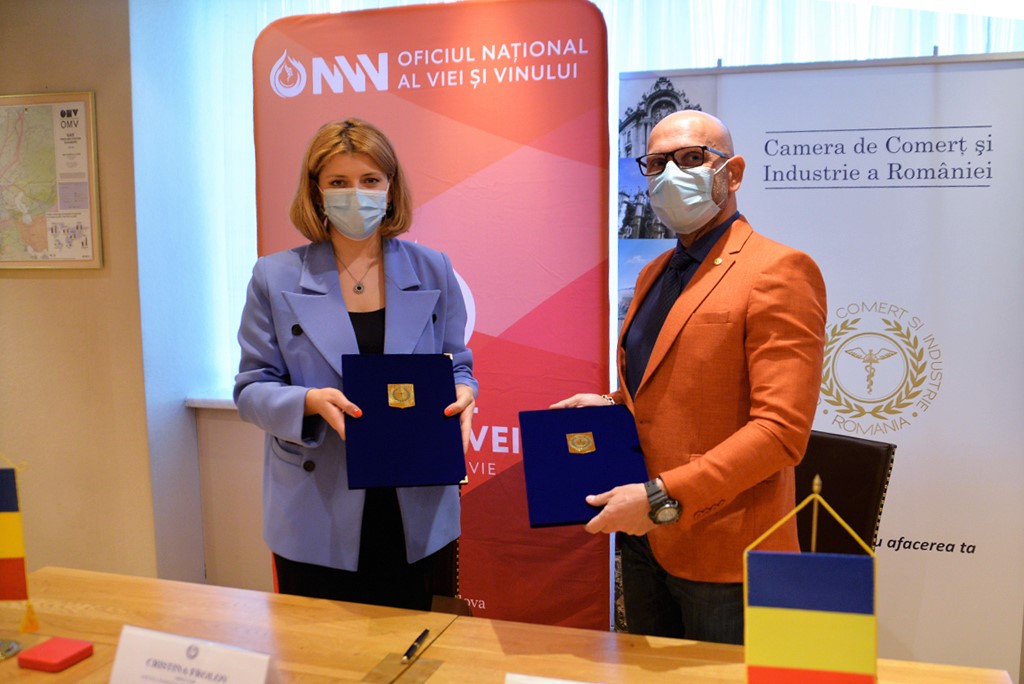
Source: ccir.ro
**
According to the data of the Romanian National Trade Register Office, the total value of Romania-Moldova trade was 1.7 billion euros at the end of last year and over 805 million euros at the end of May 2021. In July 2021, there were 6 522 companies from the Republic of Moldova in Romania, with a total capital value of 45.9 million euros.
The data of Moldova’s National Office of Vine and Wine showed that, in the first 7 months of 2021, the total quantity of bottled wine was about 27 million litres (registering an increase of 10% as compared to the same period last year), with a value of more than one billion lei, which is 32% more than the same period last year. Moldovan wines were awarded 956 medals at 32 international competitions in 2020.
Photo: ccir.ro
Economy
Moldova’s hope to be a top walnut exporter and its main difficulties
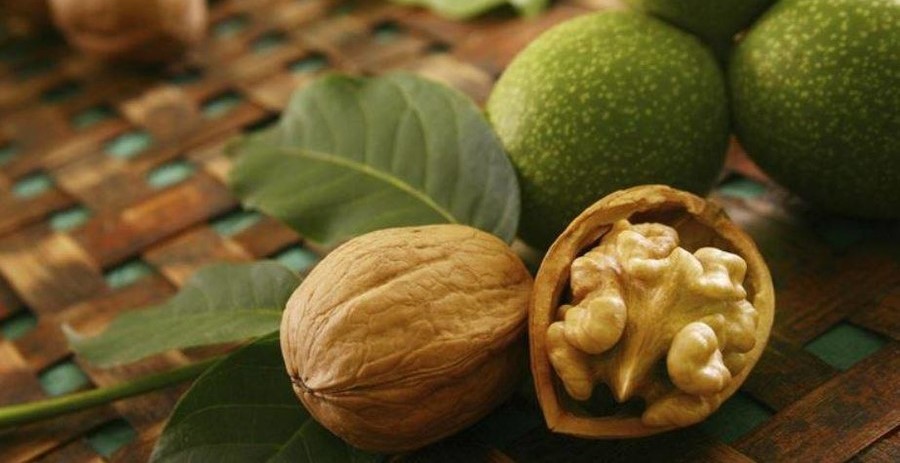
The Republic of Moldova has perfect weather conditions for growing walnut trees, that creating a great potential of walnut production and trade, especially on international markets, where the demand is way higher than the product’s supply. National and international experts believe that the country’s walnut production industry is on the verge of important transformations, which could lead to increased yields, quality and competitiveness worldwide.
According to authorities, Moldova exports 34-35 thousand tons of walnuts in shell, which is about 7% of the total export of fruit and 5% of the total export of horticultural products. The export value is assessed as being $120 million, that being 57-60% of the total fruit export value and about 50% of horticultural export value. Most of walnut crops are exported to the EU countries, such as France, Germany, the Netherlands, Romania and Austria. The country’s exports were among the world’s top 10 when it comes to the highest dollar value of the product during 2020.
Viorel Gherciu, Minister of Agriculture and Food Industry, pointed out that the production in the domestic walnut industry has increased by 55% in the last five years, which ranks Moldova among the main producers in the world.
“The biggest opportunity for this industry is that we are in the geographical proximity of the largest walnut import area in the world, which is the European Union, with almost 40% of total imports in the world. We are on the EU border, with privileged relations, with an Association Agreement. We already enjoy a good relationship in working with European importers, they trust our processors. A very close collaboration has been created and this is, in fact, the guarantee for those who invest in the area,” claimed the president of the Walnut Producers Association, Oleg Tirsina.
The data provided by the National Bureau of Statistics show that there are 34.7 thousand hectares of walnut plantations in the country. 20.90 hectares are represented by orchards. 75% of planted orchards are formed of old varieties trees. 30-35% of the exported production comes from orchards, the rest comes from individual farmers and plantations along the roads. This means that the quality of walnut production is not at its maximum potential. Developing commercial plantations through orchards modernization and extension of walnut varieties would provide double yield and better quality, experts say.
Governmental support in the form of subsidizing solutions, foreign investments and credit options are indispensable for the industry development. One of the financing options is the credit line of the European Investment Bank Project. Since 2016, 15 producers and processors of nuts, almonds and hazelnuts have benefited from these loans with the total amount of investments worth 8.7 million euros. A further extension of the project would provide another 60 million euros for the modernization of the horticultural sector in general and for harvesting organic walnuts in particular.
Photo: heymoldova.com


